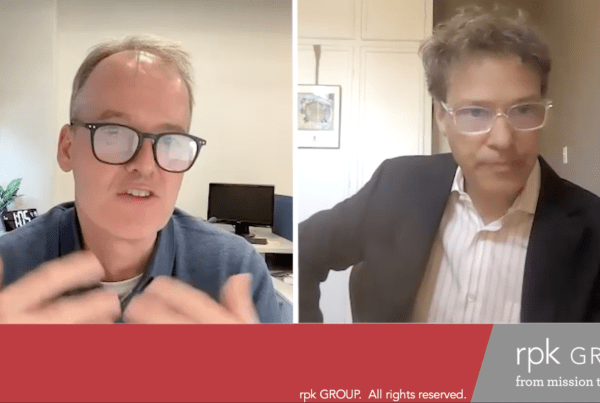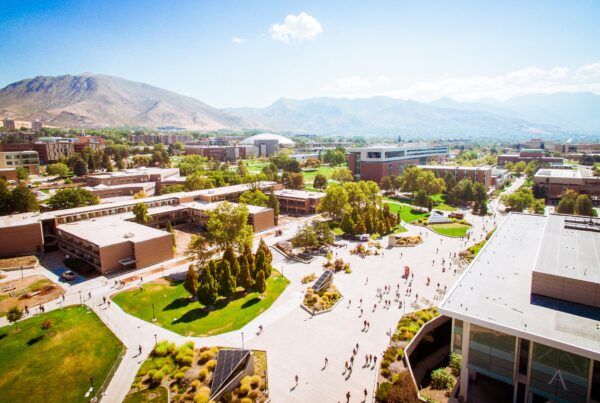For almost two years, I’ve worked with leaders at Gallaudet University (GU) to transform its academic portfolio and administrative services, all toward the goal of building a stronger and more sustainable institution. GU is the world’s only university designed for Deaf and hard of hearing students.
The biggest surprise? The lessons I’m learning from GU’s Deaf community apply to my work with anyone, anywhere.
Three key lessons have emerged from my time at GU:
- Language Matters
- Use Space to Improve Communication
- We All Need Help Communicating
Language Matters
We often unconsciously use deficit-minded language in describing certain groups (e.g., the term “at-risk students”). I learned at GU the term “hearing impaired” is not used because it is deficit-minded language instead of identity-focused language. Deaf people generally prefer the term “Deaf,” which has been claimed (and reclaimed) as an identity. Deaf is often capitalized when it refers to a Deaf person or the Deaf community.
And as the antithesis to “hearing loss,” the term “Deaf gain” refers to the many ways Deaf people, Deaf communities, and Deaf spaces enrich our world. Learning even rudimentary American Sign Language (ASL) signs exercised parts of my mind (and hands) that I don’t usually have the opportunity to use. That exploration of language continued with my daughter as we explored ASL Nook, where GU alumna Sheena McFeely shares videos of her young family to teach basic ASL signs. Explorations ultimately took me to the community around GU to discover Deaf-owned and Deaf-focused businesses, like Mozzeria pizzeria and the local Starbucks and Chase bank.
My interactions at GU were also a reminder of how language sometimes glosses over diversity. The Deaf community is diverse and multifaceted, including people who are hard of hearing (HOH), people who use hearing aids and people who do not, people who have cochlear implants, and DeafBlind people.
Use Space to Improve Communication
Deaf people are the experts on being Deaf. Instead of asking interpreters about preferred seating arrangements for a meeting, I learned to pay attention to where Deaf colleagues liked to sit in particular rooms (and where they preferred me to sit) in order to have ‘good sightlines,’ or unobstructed views, both of their colleagues participating in the meeting and of the interpreters.
Working with colleagues at GU also taught me to pay attention to my surroundings in new ways. DeafSpace, a design concept developed by Deaf people, emerged on the campus and focuses on how Deaf and DeafBlind people see and feel their environments. DeafSpace design considers how proximity, light and shadow, acoustics, and transparency support Deaf communication both inside and outside buildings. Wide hallways and entryways allow people to sign while they walk beside one another. Wood flooring resonates more, allowing Deaf and DeafBlind people to better sense, through vibrations, when people are entering or leaving a space. And backgrounds and colors are chosen so that they don’t detract from signing.
When I walk into a room today, I put these learnings to use.
- Does everyone in the room have a good view of the screen where we will be showing slides?
- Do presentation slides use colors, fonts, and visuals that support understanding?
- Am I narrating the visuals for anyone in the room who may not be able to see them well?
These are practices that benefit all people, Deaf and hearing alike.
We All Need Help Communicating
Interpreters are essential to our work at GU. And those interpreters are great teachers. Here are a few lessons they taught me:
- Remember that non-signers are the ones who require the support of an interpreter for direct communication. Everyone else in the room is bilingual – in ASL and written English. Don’t expect everyone else to adjust for you.
- Avoid jargon whenever possible. It gets in the way of good communication.
- Keep your eyes focused on the person to whom you are speaking.
- Pause to ensure that everyone has time to absorb your comments.
- When working with large groups, identify yourself before speaking.
These lessons have worked well for me with both my hearing and Deaf clients, especially as we’ve all moved to virtual communications.
Ultimately, I’ve seen that GU is truly a bilingual institution. My exposure to the richness of Deaf gain culture and the languages and people that create it have made me a better collaborator and a more attuned colleague.


